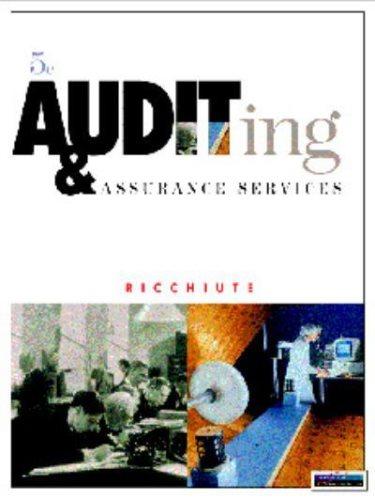Few organizations have had more impact on the profession's self-regulatory efforts than the Public Oversight Board (FOB).
Question:
Few organizations have had more impact on the profession's self-regulatory efforts than the Public Oversight Board (FOB). The FOB is a five-member autonomous monitoring mechanism that provides oversight of the SEC Practice Section of the AICFA Division for CFA Firms, meets about eight times per year (with at least one member attending every SEC Practice Section meeting), and performs two specific oversight functions:
• Oversees the peer reviews of each member firm (e.g., evaluates the review team's qualifications and experience, reads the peer review report and letter of comment, and reads the reviewed firm's response letter) and directly observes the peer review of many firms, particularly firms with five or more SEC clients, and
• Oversees all inquiries by the Quality Control Inquiry Committee into alleged audit failures.
In conjunction with these responsibilities, the FOB issues periodic reports on the profession's self-regulatory effort and special reports. For example, in 1993, the FOB issued a special report:
• In the Public Interest: A Special Report by the Public Oversight Board of the SEC Practice Section of the AICPA. Stamford, CT: FOB (March 1993).
which addressed litigation, self-regulation, standards (both accounting and auditing), public confidence, and professional practice. In 1994, the FOB issued:
• Strengthening the Professionalism of the Independent Auditor. Stamford, CT: FOB (September 1994).
which addressed audit risk, information technology, and auditors' failure to report early warnings of impending financial doom. And in 1995, the FOB issued:
• Directors, Management, and Auditors: Allies in Protecting Shareholder Interests. Stamford, CT: FOB (1995).
which addressed a corporate governance approach to improved financial reporting.
Required:
Select a recent Public Oversight Board release (FOB, One Station Place, Stamford, CT 06902, 203-353-5300), and draft a report that:
1. Describes briefly the background of each board member (board member biographies are included in an appendix to each report), 2. Explains why you think each board member has a comparative advantage in serving the public interest.
3. Describes—and gives your reaction to—the POB's conclusions and recommendations.
Step by Step Answer:






